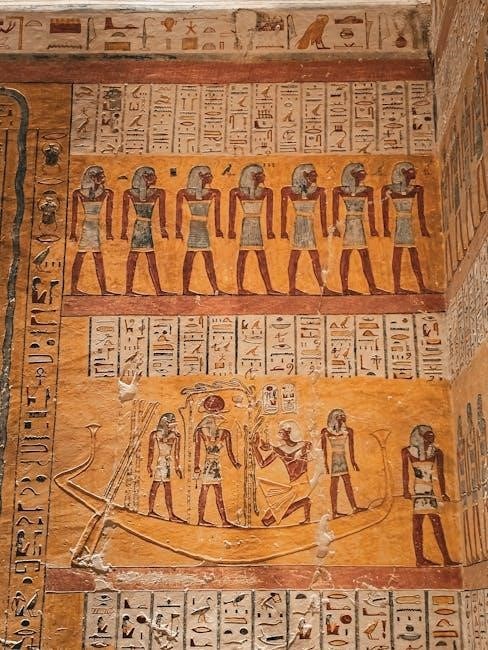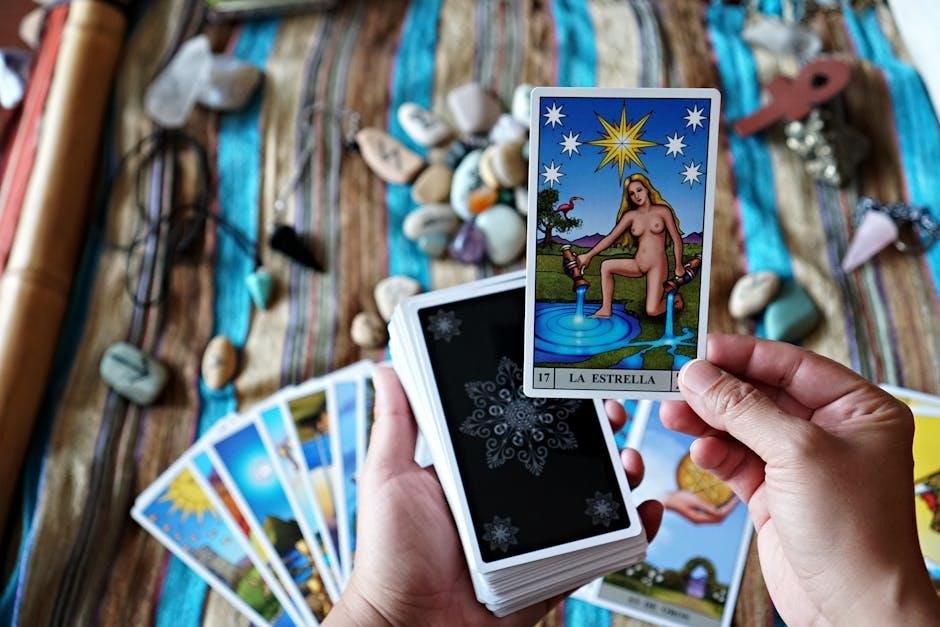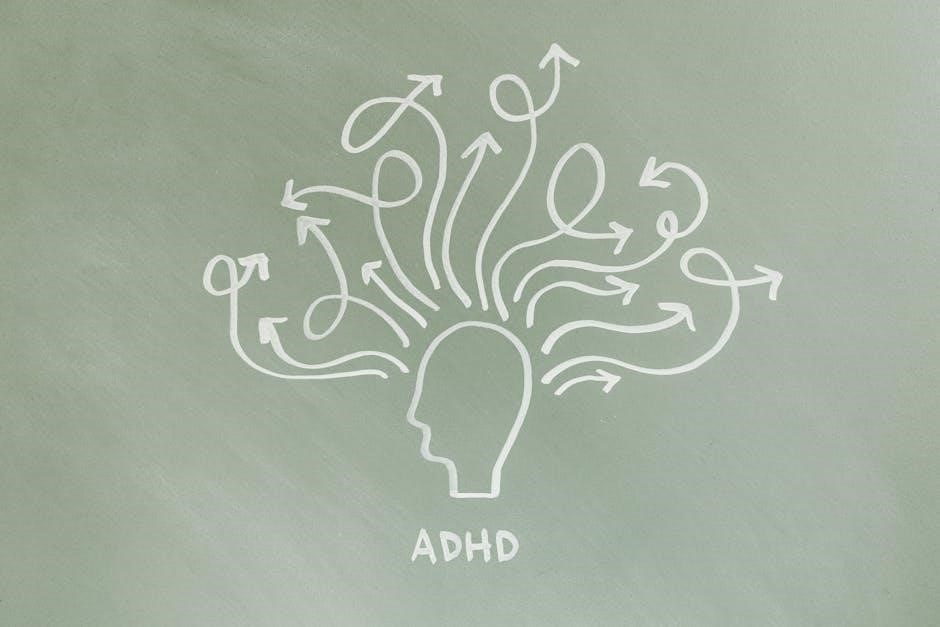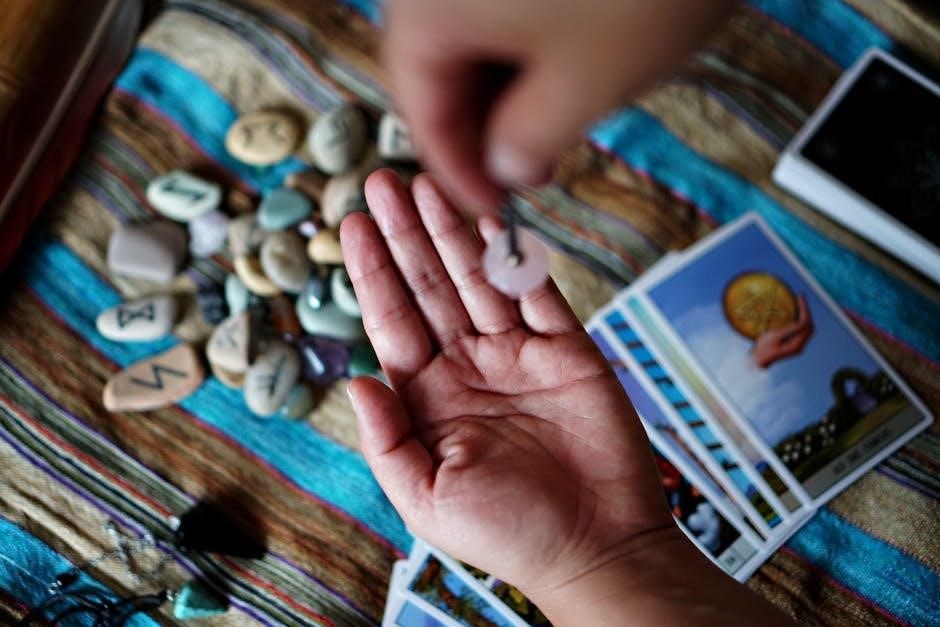adinkra symbols and meanings pdf

Adinkra symbols are visual representations of philosophical concepts, proverbs, and historical events, deeply rooted in Akan culture. Originating from Ghana and Ivory Coast, these symbols convey wisdom, strength, and community values. Used traditionally on royal cloth, they now inspire global art, fashion, and design, preserving their cultural significance and promoting cross-cultural understanding.
What Are Adinkra Symbols?
Adinkra symbols are visual representations of concepts, values, and aphorisms deeply rooted in Akan culture. Originating from the Gyaman people of Ghana and Ivory Coast, these symbols are rich in philosophical and historical significance. Traditionally printed on royal cloth, they were worn by leaders during ceremonies to convey wisdom, strength, and community values. Each symbol encapsulates proverbs, historical events, or observations about human behavior and nature. Beyond their cultural origins, Adinkra symbols have gained global recognition, inspiring art, fashion, and design. They serve as a bridge between tradition and modernity, offering insights into African cultural wisdom and fostering cross-cultural understanding. Their versatility and profound meanings make them timeless and universally appealing.
Historical and Cultural Significance
Adinkra symbols hold profound historical and cultural significance, rooted in the traditions of the Akan people of Ghana and Ivory Coast. Originally used on royal cloth, these symbols were reserved for leaders and ceremonial occasions, embodying the values and wisdom of the community. They serve as a visual archive of history, capturing proverbs, events, and philosophical ideas. Adinkra symbols are deeply intertwined with Akan culture, reflecting their worldview and connection to nature and humanity. Their enduring relevance lies in their ability to transcend time, bridging the past and present while preserving cultural identity. Today, they continue to inspire global art and design, symbolizing the richness and resilience of African heritage.
Adinkra Symbols in Modern Context
Adinkra symbols have transcended their traditional origins to become a global phenomenon, inspiring modern art, fashion, and design. They are now found in logos, textiles, furniture, and digital media, symbolizing cultural pride and African identity. In education, these symbols are used to teach cultural awareness and preserve heritage. Their philosophical meanings resonate universally, making them a popular choice for designers and artists seeking to infuse traditional wisdom into contemporary creations. Universities in Ghana often incorporate Adinkra symbols into their logos, highlighting their enduring significance. This modern adaptation ensures that Adinkra symbols remain relevant, bridging the gap between tradition and innovation while fostering cross-cultural understanding and appreciation.

Origin and History of Adinkra Symbols
Adinkra symbols originated from the Gyaman people of Ghana and Ivory Coast, with roots in royal cloth traditions. Their migration and evolution over centuries shaped their cultural significance.
The Gyaman People and Their Connection to Adinkra
The Gyaman people, originating from present-day Ghana and Ivory Coast, are credited with the creation of Adinkra symbols. These symbols were initially used on royal cloth, worn by kings and queens during significant ceremonies. The Gyaman’s rich cultural heritage and deep understanding of nature and human behavior influenced the development of these iconic visuals. Each Adinkra symbol carries a unique meaning, often reflecting proverbs, historical events, or philosophical ideas. Their connection to the divine and natural world is evident in the designs, which have become a cornerstone of Akan culture and identity. Today, Adinkra symbols continue to inspire global art, fashion, and design, bridging traditional wisdom with modern creativity.
Adinkra Cloth and Its Royal Significance
Adinkra cloth holds a sacred place in Akan culture, traditionally reserved for royalty and high-ranking officials. The intricate symbols printed on the cloth were hand-stamped using carved calabash blocks, a labor-intensive process reflecting the cloth’s value; Each symbol on the fabric conveyed specific messages about wisdom, strength, and community, serving as a visual language. During ceremonies and important events, kings and queens wore Adinkra cloth to showcase their status and connection to their heritage. The cloth not only symbolized power but also acted as a medium for preserving cultural history and philosophy. Its royal significance continues to inspire contemporary fashion and art, ensuring the legacy of Adinkra endures.
Evolution of Adinkra Symbols Over Time
Adinkra symbols have evolved significantly since their origins with the Gyaman people. Originally used on royal cloth, their meanings expanded as they spread across cultures. Over time, new symbols emerged, blending traditional themes with contemporary ideas. The method of creation shifted from hand-carved calabash stamps to modern digital designs, making them more accessible. Despite these changes, the core philosophical and cultural essence of Adinkra symbols remains intact. Their global popularity has led to their inclusion in art, fashion, and even corporate logos, ensuring their relevance in modern times while preserving their historical significance. This evolution highlights their adaptability and enduring cultural importance.

Philosophical and Symbolic Meanings
Adinkra symbols encapsulate wisdom, strength, and community values, reflecting deep spiritual and philosophical insights. They represent interconnectedness with nature, humanity, and the divine, embodying timeless truths and cultural heritage.
Wisdom, Strength, and Community: Core Values in Adinkra
Adinkra symbols embody the core values of wisdom, strength, and community, reflecting the rich philosophical underpinnings of Akan culture. Wisdom is depicted through symbols like Sankofa, which emphasizes learning from the past, and Aya, representing strength and resilience. Community values are highlighted in symbols that celebrate unity and collective effort, such as Mmrafo Ano Ye Hene, which underscores the importance of leadership and responsibility. These symbols serve as visual proverbs, transmitting timeless truths about human behavior, nature, and the divine. They foster a sense of identity and shared purpose, making them a cornerstone of cultural and philosophical expression in both traditional and contemporary contexts.
Spirituality and the Connection to the Divine
Adinkra symbols deeply reflect the spiritual beliefs of the Akan people, emphasizing a profound connection to the divine. Symbols such as Oyinso and Dwennimmen highlight the interplay between the sacred and the worldly. Oyinso represents divine inspiration, while Dwennimmen symbolizes the balance between the physical and spiritual realms. These symbols serve as reminders of the divine presence in daily life, guiding individuals towards moral and ethical behavior. They also illustrate the belief in ancestors as intermediaries between the living and the divine, reinforcing the importance of honoring heritage and tradition. Through these symbols, spirituality is woven into the fabric of Akan identity and cultural expression, providing a sense of purpose and divine guidance.
Nature and Humanity: Interconnected Themes
Adinkra symbols profoundly illustrate the interconnectedness of nature and humanity, reflecting the Akan belief in the harmony between the natural and human worlds. Symbols like Hye Wo Nhye (the crooked and the straight) and Sankofa (the bird turning backward) emphasize the balance and interdependence of all living things. These symbols depict how nature influences human behavior and vice versa, encouraging respect for the environment. The Akan people see nature as a source of wisdom, with many symbols drawing from animals, plants, and natural phenomena. This relationship highlights the importance of living in sync with nature, a philosophy that resonates globally in modern environmental consciousness and sustainable practices.
Proverbs and Maxims: The Oral Tradition in Symbols
Adinkra symbols are deeply rooted in the oral traditions of the Akan people, serving as visual representations of proverbs, maxims, and wisdom. Many symbols, such as Hye Wo Nhye (the crooked and the straight), encapsulate moral lessons about balance and duality. These symbols act as reminders of cultural values, ethical behavior, and historical events, preserving the Akan people’s rich oral heritage. By translating proverbs into visual forms, Adinkra symbols offer a universal language, making complex ideas accessible and memorable. This tradition highlights the interconnectedness of art, language, and philosophy in Akan culture, ensuring that timeless wisdom is passed down through generations; The symbols continue to inspire reflection and dialogue, bridging the past and present.

Popular Adinkra Symbols and Their Meanings
Adinkra symbols like Hye Wo Nhye (crooked and straight) and Sankofa (go back and fetch it) are widely recognized, carrying meanings tied to wisdom, resilience, and cultural values.
Common Symbols and Their Interpretations
Adinkra symbols are rich in meaning, with each representing a specific concept or proverb. Hye Wo Nhye, symbolizing “crooked and straight,” reflects balance in life. Sankofa, the bird looking back, signifies the importance of learning from the past. Anansi the Spider embodies wisdom and cunning, while Gye Nyame (“except God”) underscores divine supremacy. These symbols are widely recognized and often used in art, fashion, and cultural practices. Their interpretations highlight Akan philosophy, emphasizing values like resilience, wisdom, and harmony with nature. Such symbols serve as visual reminders of cultural heritage and continue to inspire contemporary applications, bridging tradition and modernity.
Symbols Related to Leadership and Authority
Adinkra symbols often reflect themes of leadership and authority, emphasizing wisdom, strength, and responsibility. The Gye Nyame symbol, meaning “except God,” underscores humility in leadership, while Nsaa represents authority and the power to command respect. Owo FORO Dua symbolizes the chief’s staff, embodying leadership and guidance. These symbols highlight the importance of just rule and the balance between power and accountability. They are frequently used in traditional and modern contexts to signify respect for leaders and the principles they uphold. By exploring these symbols, one gains insight into the Akan ideals of governance and community leadership, which remain relevant today.
Symbols Representing Love, Harmony, and Unity
Adinkra symbols also embody themes of love, harmony, and unity, reflecting the importance of interpersonal relationships in Akan culture. The Dwennimmen symbol, representing hummingbirds, signifies the pursuit of happiness and the beauty of togetherness. Boa Me Na Me Mmoa Wo translates to “help me and let me help you,” emphasizing mutual support and unity. Conny, depicting two hearts, symbolizes love and affection. These symbols are often used in weddings, festivals, and community events to foster harmony and strengthen bonds. They highlight the Akan belief in the strength derived from unity and the enduring power of love and cooperation in building resilient communities.
Symbols Signifying Wisdom and Knowledge
Adinkra symbols often represent wisdom and knowledge, reflecting the Akan people’s deep respect for intellectual pursuits and understanding. The Ananse Ntontan symbol, depicting a spider’s web, signifies wisdom, creativity, and the complexities of human thought. Gye Nyame, meaning “except God,” underscores the limitlessness of knowledge and divine wisdom. These symbols are used to encourage learning, critical thinking, and the pursuit of understanding. They remind us that wisdom is a lifelong journey and a cornerstone of personal and communal growth, deeply embedded in Akan philosophy and daily life.

Adinkra Symbols in Contemporary Culture
Adinkra symbols are widely used in modern art, fashion, and design, inspiring global creativity. They appear in logos, textiles, and digital media, fostering cultural pride and identity.
Use of Adinkra in Art and Design
Adinkra symbols have become a vibrant element in contemporary art and design, inspiring creators worldwide. Their incorporation into sculptures, paintings, and digital art highlights their timeless appeal. Designers often blend these symbols with modern aesthetics to create unique pieces, from furniture to textiles. The integration of Adinkra motifs in graphic design and branding further showcases their versatility. By combining traditional meanings with innovative techniques, artists and designers not only honor the symbols’ cultural heritage but also introduce them to new audiences, ensuring their legacy endures in the modern world.
Adinkra-Inspired Fashion and Textiles
Adinkra symbols have profoundly influenced fashion and textiles, blending cultural heritage with contemporary style. Designers incorporate these iconic motifs into fabrics, creating vibrant and meaningful clothing. From traditional garments to modern accessories, Adinkra prints add a touch of African wisdom and artistry. The symbols’ deep meanings resonate globally, making them a popular choice for designers seeking to infuse cultural depth into their work. This fusion not only preserves Adinkra’s legacy but also introduces its rich symbolism to a broader audience, fostering cross-cultural appreciation and ensuring its continued relevance in the fashion world.
Adinkra in Education and Cultural Awareness
Adinkra symbols play a vital role in education and cultural awareness, serving as tools to teach African heritage and values. Educational institutions often incorporate these symbols into curricula to explore their meanings and historical significance. Universities in Ghana, for instance, frequently use Adinkra symbols in their logos, reflecting their cultural importance. Workshops and cultural programs utilize Adinkra to promote cross-cultural understanding, enabling participants to connect with Akan philosophy and traditions. By integrating Adinkra into educational materials, educators foster a deeper appreciation of African culture, ensuring its preservation and transmission to future generations. This approach bridges cultural gaps and enriches global perspectives.

How to Create an Adinkra Symbols PDF
To create an Adinkra symbols PDF, compile symbols, their meanings, and cultural context. Include high-quality images from online libraries or design tools for a visually appealing layout.
Steps to Compile Adinkra Symbols and Meanings
To compile Adinkra symbols and meanings, start by researching and listing symbols with their corresponding interpretations. Organize them alphabetically or thematically for clarity. Include high-quality images of each symbol, ensuring they are visually distinct. Provide cultural context and historical background to enhance understanding. Cross-reference meanings from reliable sources to ensure accuracy. Format the content with clear headings and bullet points for readability. Add a table of contents for easy navigation. Finally, proofread and ensure the PDF is visually appealing and informative, making it a valuable resource for cultural education and inspiration.
Designing a Visually Appealing PDF
Creating a visually appealing Adinkra symbols PDF involves careful layout and design choices. Use high-resolution images of the symbols to ensure clarity; Choose a clean, readable font for the meanings and descriptions. Incorporate a color scheme that reflects the cultural heritage, such as earth tones or vibrant African-inspired hues. Organize symbols logically, grouping them by theme or meaning. Add background textures or subtle patterns to enhance visual interest. Ensure proper spacing and alignment to maintain readability. Highlight key symbols or sections with borders or call-out boxes. Include a table of contents for easy navigation. Finally, proofread for consistency and accuracy to create a professional, engaging resource.
Resources for High-Quality Adinkra Images
To create a professional Adinkra symbols PDF, sourcing high-quality images is essential. Websites like Adobe Stock, Getty Images, and Wikimedia Commons offer a wide range of Adinkra symbols in high resolution. Additionally, platforms like Unsplash and Pixabay provide free, royalty-free images suitable for educational or creative projects. Academic institutions and cultural organizations often host repositories of Adinkra symbols, ensuring authenticity and detail. Specialized African cultural websites also offer curated collections, perfect for both traditional and contemporary designs. When selecting images, prioritize clarity and resolution to maintain visual appeal and professionalism in your PDF.

Interpreting Adinkra Symbols
Interpreting Adinkra symbols requires understanding their cultural context, historical significance, and philosophical meanings. Each symbol embodies proverbs, values, and beliefs, reflecting Akan wisdom and traditions. Through their intricate designs, Adinkra symbols bridge the past and present, offering insights into African culture and inspiring global applications in art, education, and design. Their meanings are layered, often symbolizing concepts like wisdom, strength, and community, making them a profound tool for cross-cultural communication and self-reflection. By decoding these symbols, one gains a deeper appreciation of their enduring legacy and relevance in modern times, fostering a connection to their rich cultural heritage and universal themes.
Understanding the Context of Each Symbol
Understanding the context of each Adinkra symbol is essential to grasping their meanings. Rooted in Akan culture, these symbols often represent proverbs, historical events, or philosophical ideas. Their designs are not random but carry specific messages tied to the experiences and beliefs of the Akan people. For example, symbols like the “Sankofa” emphasize the importance of learning from the past, while “Fauvua” represents the power of perseverance. Each symbol is deeply connected to Akan values, such as wisdom, strength, and community. By exploring their origins and cultural significance, one can unlock their timeless wisdom and appreciate their relevance in both traditional and modern contexts, fostering a deeper connection to their cultural heritage.
Decoding the Hidden Meanings

Decoding the hidden meanings of Adinkra symbols requires a deep understanding of their cultural and historical context. Each symbol carries layered significance, often rooted in proverbs, folklore, or philosophical ideas. For instance, the “Sankofa” symbol, depicting a bird turning its head backward, teaches the importance of learning from the past. Similarly, “Anansi the Spider” embodies wisdom and cunning, reflecting the cleverness associated with the legendary figure. These symbols are not merely decorative but serve as visual metaphors that convey moral lessons, cultural values, and historical narratives. By studying their origins and stories, one can uncover their profound meanings, revealing the richness of Akan wisdom and its enduring relevance in modern times.
Symbolism in Akan Culture and Beyond
Adinkra symbols are deeply embedded in Akan culture, serving as visual representations of philosophical ideas, proverbs, and cultural values. They symbolize concepts like wisdom, strength, and community, reflecting the Akan worldview. Beyond their cultural origins, these symbols have gained global recognition, inspiring art, fashion, and design. Their universal appeal lies in their ability to transcend cultural boundaries, making them relevant in contemporary contexts. In Akan society, they are often used in traditional cloth, ceremonies, and storytelling, while globally, they appear in logos, textiles, and educational materials. This adaptability highlights their enduring significance as bridges between tradition and modernity, fostering cross-cultural understanding and appreciation.
Adinkra symbols leave a lasting legacy, preserving Akan cultural wisdom and inspiring global appreciation. Their enduring relevance bridges tradition and modernity, fostering cross-cultural understanding and respect.
The Enduring Legacy of Adinkra Symbols
Adinkra symbols, originating from the Gyaman people of Ghana and Ivory Coast, have transcended time and culture, becoming a global phenomenon. Their rich philosophical and historical significance continues to inspire art, fashion, and education. These symbols, once reserved for royal cloth, now grace logos, sculptures, and textiles worldwide, bridging tradition and modernity. Their ability to convey complex ideas through simple designs has made them a powerful tool for cultural preservation and cross-cultural dialogue. As a testament to Akan wisdom, Adinkra symbols endure, educating future generations about the interconnectedness of nature, humanity, and the divine. Their legacy is a celebration of African heritage and its universal appeal.
Final Thoughts on Their Cultural Importance
Adinkra symbols embody the essence of Akan cultural identity, serving as a bridge between tradition and modernity. Their wisdom-filled designs continue to inspire global audiences, fostering cultural appreciation and education. Beyond their aesthetic appeal, these symbols preserve historical narratives and philosophical truths, ensuring their relevance in contemporary contexts. As tools for storytelling and education, they connect generations, emphasizing values like community and spirituality. Their integration into various art forms highlights their enduring influence, making them a cherished part of African heritage. Adinkra symbols not only honor the past but also shape the future, ensuring their cultural importance remains timeless and universal.

References and Further Reading
Explore adinkra.org for comprehensive symbol meanings. Academic papers by A. Martino (2018) and N. Tetteh (2022) offer deeper insights. Online libraries provide extensive PDF collections.

Recommended Resources for Adinkra Symbols
For in-depth exploration, visit adinkra.org, offering a detailed list of symbols and meanings. Academic papers by A. Martino (2018) and N. Tetteh (2022) provide scholarly insights. Online libraries like Google Scholar and JSTOR host numerous PDFs on Adinkra symbolism. Additionally, cultural websites and books on Akan heritage are invaluable resources. Multi-page PDFs and posters are available for educational purposes. Explore icon libraries for Ga and Ewe symbols, expanding your knowledge beyond Adinkra. These resources collectively enrich understanding of the philosophical and historical significance of Adinkra symbols in African culture and their global influence.
Academic Papers and Studies on Adinkra
Academic papers on Adinkra symbols offer profound insights into their cultural and philosophical significance. A. Martino’s 2018 study highlights how stamping Adinkra cloth fosters cross-cultural connections, while N. Tetteh’s 2022 research explores their role in visual iconography. These works, accessible via Google Scholar and JSTOR, provide detailed analyses of Adinkra’s symbolic meanings and historical context. They are essential resources for scholars and enthusiasts seeking to understand the depth of Adinkra’s influence in art, education, and cultural preservation. These papers are available in PDF formats, making them easily accessible for further study and reference.
Online Libraries and PDF Collections
Online libraries offer extensive collections of Adinkra symbols and their meanings in PDF formats. Websites like the British Library and UNESCO’s digital archives provide accessible resources for researchers and enthusiasts. Platforms such as Google Arts & Culture and African Studies databases host comprehensive guides and downloadable PDFs. These libraries feature detailed explanations, high-quality images, and historical context, making them invaluable for educational and creative purposes. Additionally, websites like adinkra.org and cultural institutions in Ghana and Ivory Coast offer free PDF downloads, ensuring widespread accessibility to these symbolic treasures.